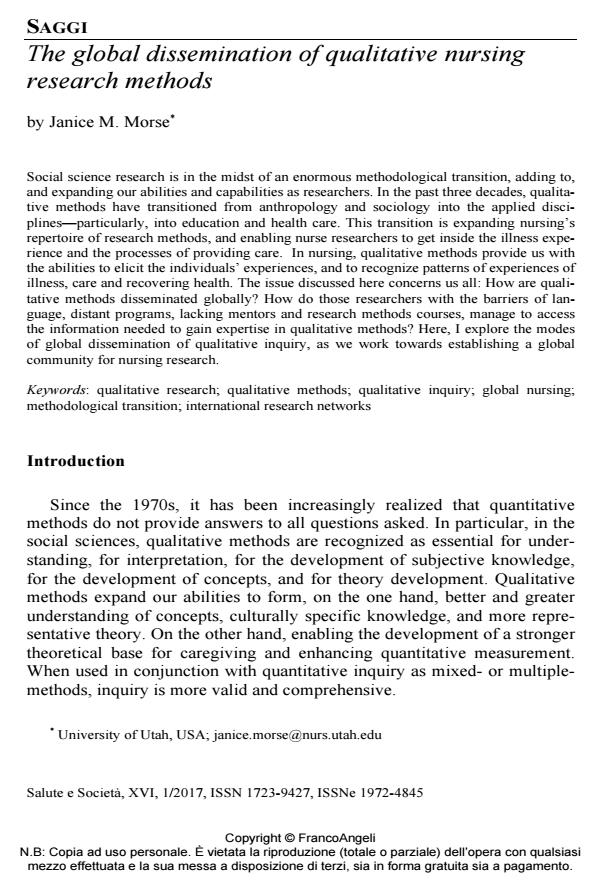The global dissemination of qualitative nursing research methods
Journal title SALUTE E SOCIETÀ
Author/s Janice M. Morse
Publishing Year 2017 Issue 2017/1
Language English Pages 15 P. 9-23 File size 692 KB
DOI 10.3280/SES2017-001002
DOI is like a bar code for intellectual property: to have more infomation
click here
Below, you can see the article first page
If you want to buy this article in PDF format, you can do it, following the instructions to buy download credits

FrancoAngeli is member of Publishers International Linking Association, Inc (PILA), a not-for-profit association which run the CrossRef service enabling links to and from online scholarly content.
Social science research is in the midst of an enormous methodological transition, adding to, and expanding our abilities and capabilities as researchers. In the past three decades, qualitative methods have transitioned from anthropology and sociology into the applied disciplines-particularly, into education and health care. This transition is expanding nursing’s repertoire of research methods, and enabling nurse researchers to get inside the illness experience and the processes of providing care. In nursing, qualitative methods provide us with the abilities to elicit the individuals’ experiences, and to recognize patterns of experiences of illness, care and recovering health. The issue discussed here concerns us all: How are qualitative methods disseminated globally? How do those researchers with the barriers of language, distant programs, lacking mentors and research methods courses, manage to access the information needed to gain expertise in qualitative methods? Here, I explore the modes of global dissemination of qualitative inquiry, as we work towards establishing a global community for nursing research.
Keywords: Qualitative research; qualitative methods; qualitative inquiry; global nursing; methodological transition; international research networks
- Moving Beyond Text-and-Talk in Qualitative Health Research: Methodological Considerations of Using Multiple Media for Data Collection Anri Smit, Leslie Swartz, Jason Bantjes, Rizwana Roomaney, Bronwyne Coetzee, in Qualitative Health Research /2021 pp.600
DOI: 10.1177/1049732320976556
Janice M. Morse, The global dissemination of qualitative nursing research methods in "SALUTE E SOCIETÀ" 1/2017, pp 9-23, DOI: 10.3280/SES2017-001002